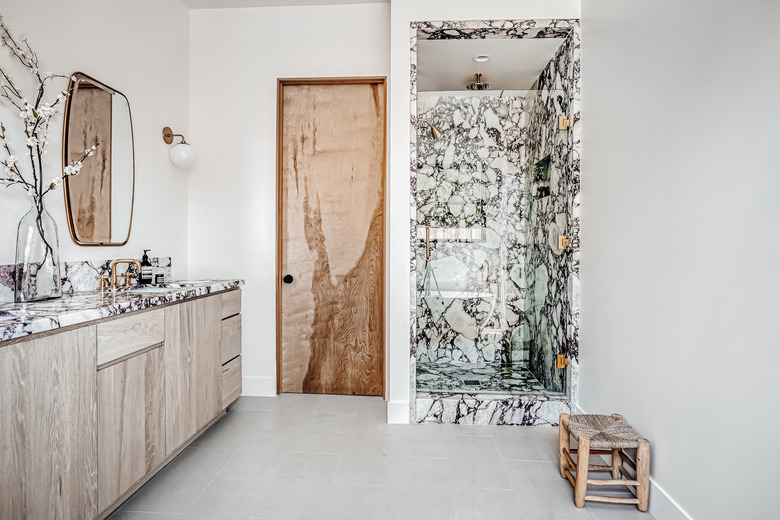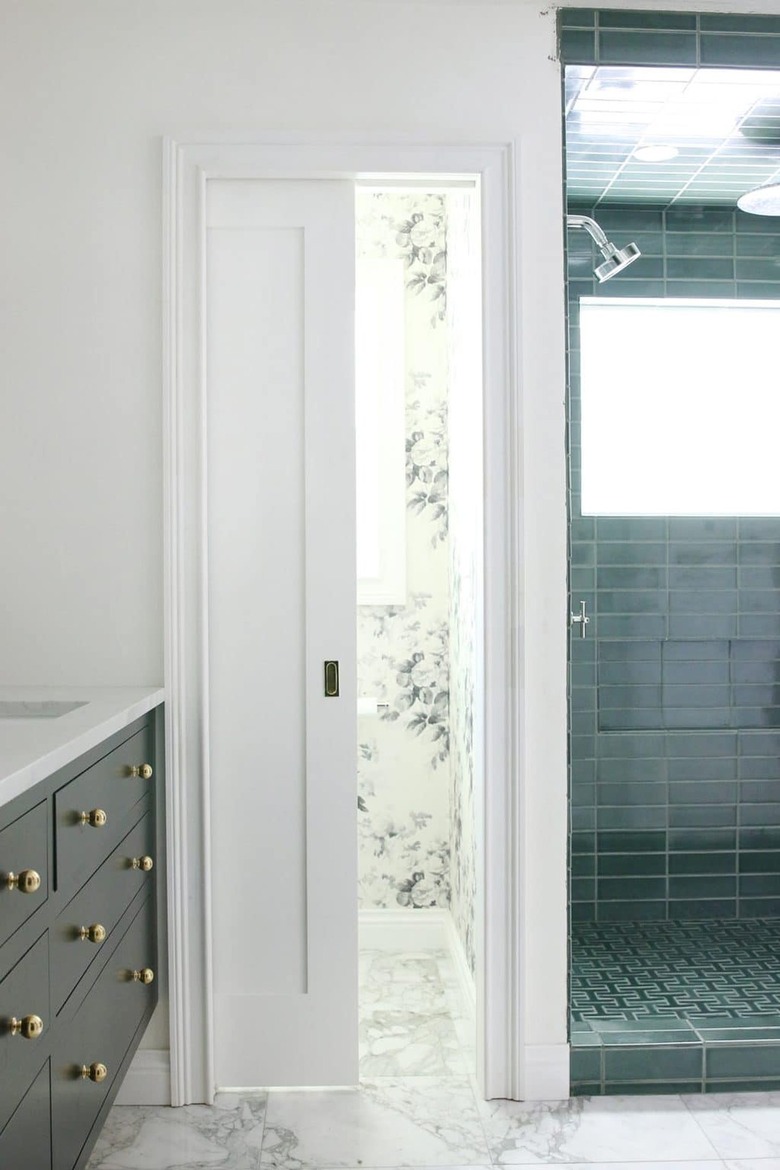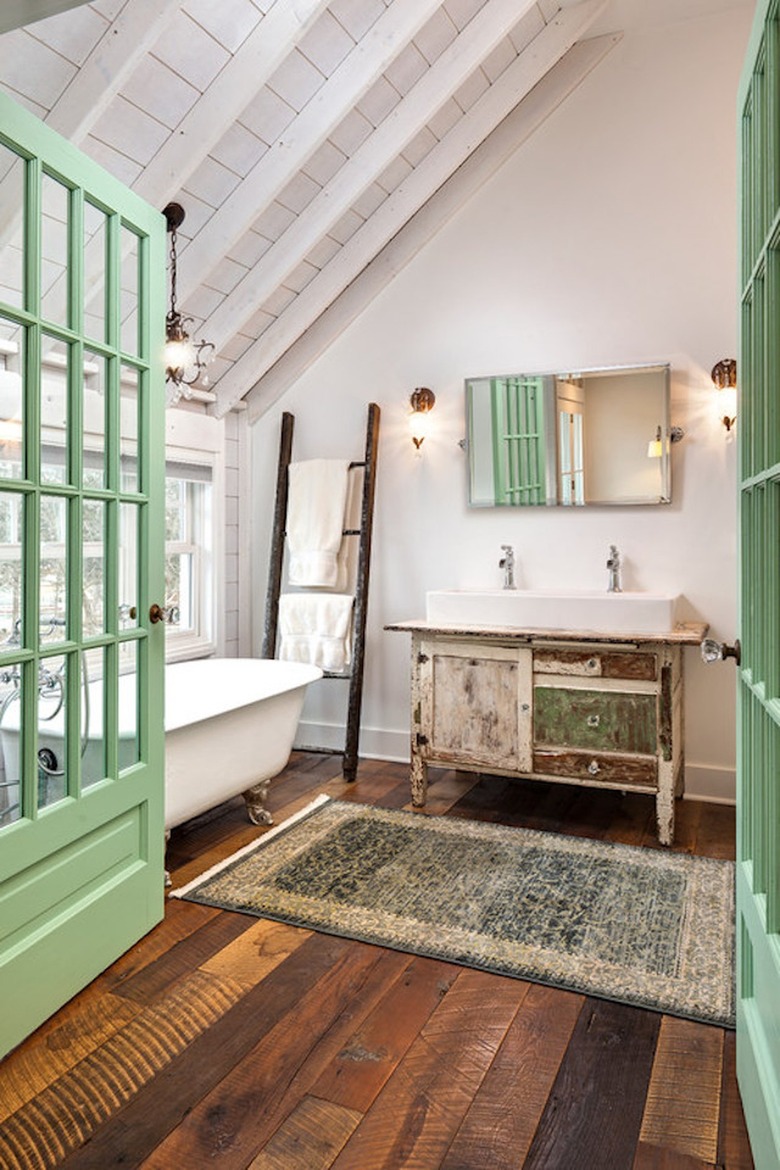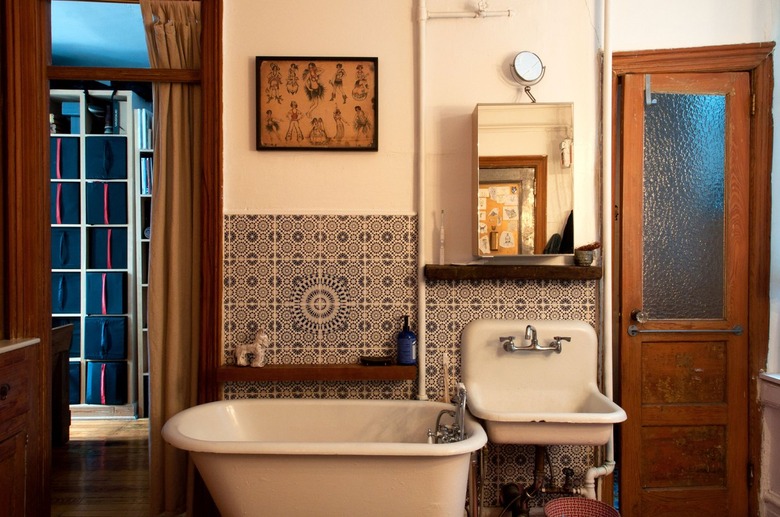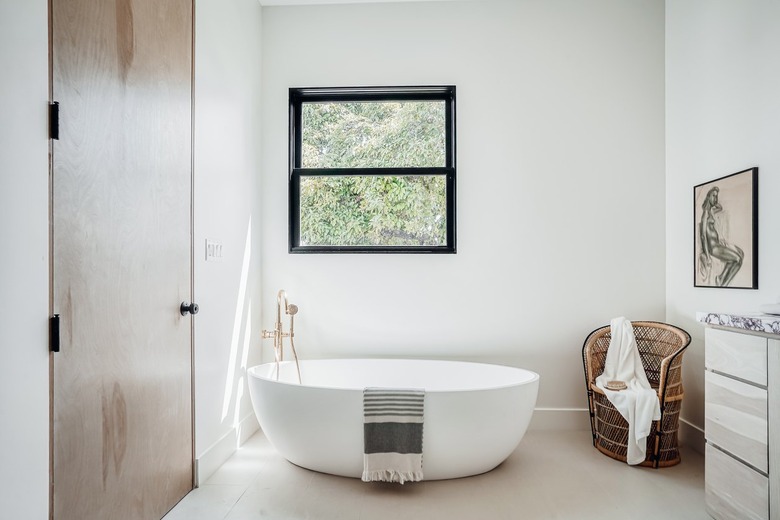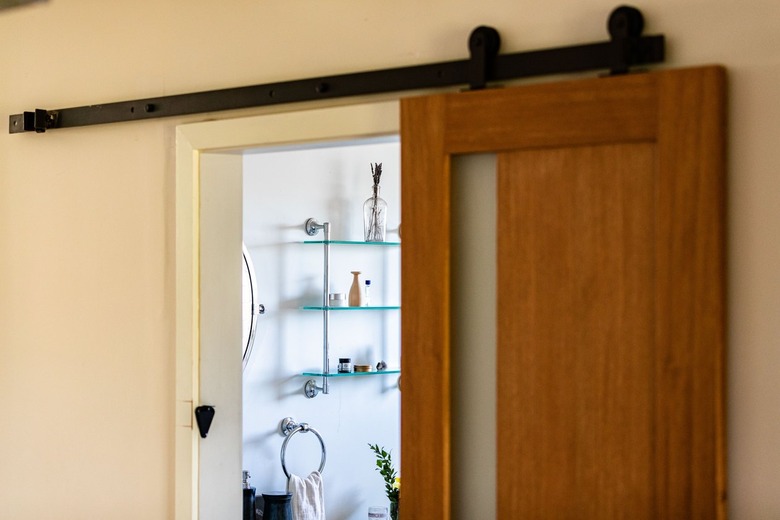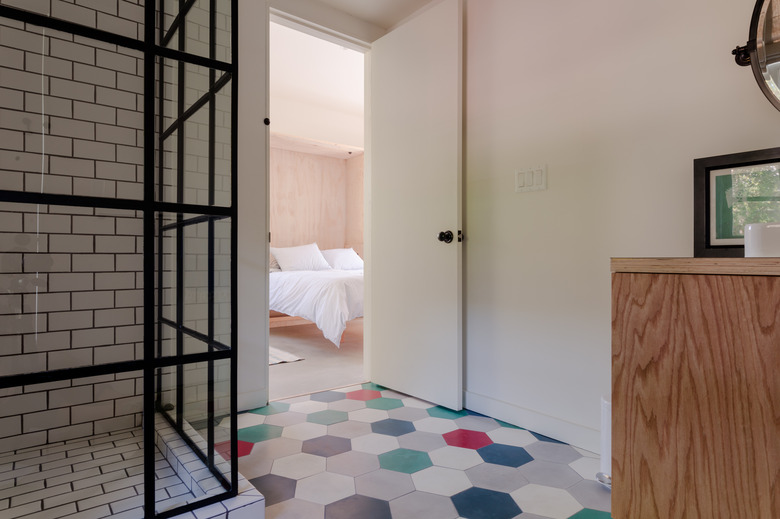A Complete Guide To Choosing A Bathroom Door
We may receive a commission on purchases made from links.
When designing a bathroom, features like the vanity and shower often get most of the attention, but don't discount the importance of the bathroom door. It serves not only as a much-needed privacy feature but it can also double as a storage space (particularly if you're dealing with a small bathroom with limited closets or space under the vanity).
Whether you're remodeling an existing bathroom or designing a new one, consider the type, swing, size, hardware, and other features when choosing the best bathroom door for your home.
Types of Bathroom Doors
Types of Bathroom Doors
Most homes feature standard swinging doors, but there are other door types to consider for homeowners with small spaces or those who want to add a bit of pizazz to the bathroom door entrance. Your home's interior design style and the available space are often deciding factors in the type of door you choose.
Standard Swinging Doors
Going with the traditional swinging door offers easy installation and a versatile look. You can find swinging doors in many different styles, from simple, flat-panel doors to intricately designed doors with inset panels. While not as common, you can also find swinging doors with a glass panel, usually featuring frosted glass for privacy.
The main drawback of a swinging door is the floor space it requires for the swing. In a small bathroom, a swinging door might hit the toilet or sink, or it can make it difficult to get in and out of the bathroom.
Barn-Style Sliding Doors
A sliding barn door eliminates the swing, which makes it ideal in a tight space where a traditional swinging door gets in the way. Plus, they're easy to open and close since they slide along the track.
However, a sliding door moves along the wall outside the bathroom, so you'll need a large, empty wall space to accommodate the door. This door design also lacks a secure seal when it's closed, typically leaving small gaps that might let people see in.
Because of these design factors, barn doors are usually best in a primary bathroom inside your bedroom. A barn door on the main bathroom near your living spaces can lack privacy, especially for guests who might feel self-conscious using the room with gaps along the door.
Pocket Doors
Another sliding door design is the pocket door. Pocket doors slide like barn doors, but they go inside the wall instead of sitting on the outside. The installation can get complicated — and isn't really appropriate for the novice DIYer — since the studs need to be removed to accommodate the door and its special frame, or housing. However, unlike a sliding barn door, you can utilize the wall outside the bathroom without interference from the door. They also tend to close tighter than barn doors and can even lock to increase privacy.
French Doors
While less common, you can also use French doors for a dramatic look in your bathroom. The two doors both swing open to create a large doorway. Like a single swinging door, this option requires ample floor space. French doors also take up more wall space since the opening has to be large enough for two doors.
Because French doors typically incorporate glass panels that don't offer much, if any, privacy, they would be best used in a primary bedroom suite and not a guest bathroom.
Bathroom Door Size
Bathroom Door Size
If you're doing a simple door replacement, you'll likely choose the same size of door that's already in your bathroom. You can measure the existing door to get the correct sizing. If you're building a new house, adding a new bathroom, or doing an extensive remodel, however, you can choose the door size you want.
But why exactly would you want to add anything other than a standard-sized door? Accessibility is the most common reason. Wide doors make the space more accessible for everyone, and even if you or your loved ones don't have any mobility issues now, designing for the future is always a good idea.
Tip
For accessibility with a wheelchair, your bathroom door should be a minimum of 32 inches wide if you have a straight shot into the bathroom. For example, if you have a primary bathroom that allows you to walk straight in from the bedroom or if the bathroom is at the end of a hallway, then 32 inches should be fine. For a bathroom door requiring a turn to get into it, such as at the side of a hallway, the door needs to be at least 36 inches. This allows a wheelchair to turn and make it through the door.
Bathroom Door Materials
Bathroom Door Materials
Because the bathroom is one of the most humid environments in the house, door materials can make a big impact on your decision. Wood doors are often used in interior spaces, but wood and humidity can be a bad combination as it will likely require more upkeep to maintain the appearance.
Other door materials to consider include:
- PVC: PVC doors give you the look of a painted wood door without the maintenance. They resist peeling and warping that can often happen with high moisture levels, and they're easy to wipe clean with a cloth.
- Steel: Steel doors for the bathroom aren't as common, but you can use the metal option if you want a sleek, modern door with durability. It won't warp like wood can, but it can corrode if you don't take proper care of the door.
- Fiberglass: Unlike wood doors with a sometimes uneven wood grain, fiberglass doors are smooth, but they can be finished to replicate different wood looks for various design options. Fiberglass is a very strong, durable material and can hold up well in bathrooms.
Bathroom Door Hardware
Bathroom Door Hardware
Convenient and attractive hardware completes your door selection. Traditional knobs offer a classic look, but they can be difficult to turn. Lever-style door handles are ideal for an accessible bathroom because they're easier to operate with limited mobility in the hands. On sliding doors, a simple flush door pull is common, while barn doors often have a pull handle on the outside and a flush door pull on the inside. Regardless of the type of door handle, choose a finish that coordinates with the other bathroom finishes.
Everyone wants their privacy when using the bathroom, so locks are another factor to consider. Common lock options for bathrooms include:
- Handle or knob locks: These locks are built into the door handle with a pushbutton or turning lock. You can often release the lock from the outside by pushing the included key or a straightened bobby pin through the small hole on the exterior handle.
- Deadbolts: Some bathrooms use deadbolts, although this type of security isn't usually necessary in a home bathroom.
- Sliding door latches: Barn doors and pocket doors often have special latches that work with the sliding door style.
- Passage locks: These aren't actually locks at all, so they don't offer any privacy. A passage doorknob latches the door when you close it, but it doesn't have a lock on it. This is ideal if you have young kids who might lock themselves in the bathroom or people with mobility issues who might struggle to lock and unlock a door.
Bathroom Door Swing Considerations
Bathroom Door Swing Considerations
If you go with the standard swing-style door, one thing to consider when installing is the door swing. Interior doors often swing into the room. However, it's also possible to choose an outward-swinging bathroom door, which has some advantages.
An outward swing leaves more space inside the bathroom, which is a perk in a tight space because it won't hit your sink or toilet. Outward-swinging doors fit the Universal Design idea of creating a home that's safe and functional for everyone. The bathroom is a common place for falls. If someone has limited mobility and falls in the bathroom, an outward-swinging door makes it easier for you to enter because the person in the bathroom can't block the door. The hinges are on the outside, so you can remove the pins and take the door off to enter in case of an emergency.
There are also some drawbacks of an outward-swinging door, including less hallway space. Since the door swings outward, the door can get in the way, especially in a small hallway. A person walking by could get hit when someone swings open the door unexpectedly.

